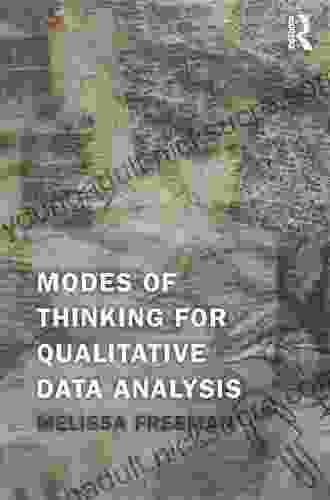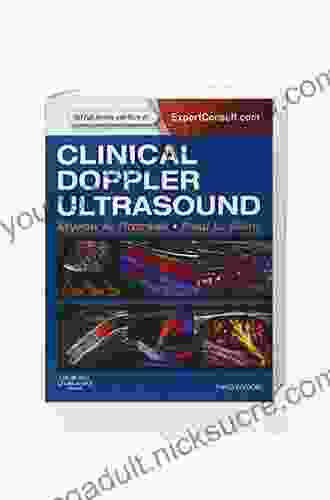Head and Neck Imaging

Head and neck imaging is a branch of medical imaging that focuses on the anatomy and function of the head and neck region. Head and neck imaging is critical for diagnosing and treating a wide range of conditions, including head and neck cancer, thyroid cancer, salivary gland tumors, parathyroid tumors, skull base tumors, facial nerve disorders, temporomandibular joint disorders, sinus disease, and ear disease.
There are a variety of head and neck imaging techniques available, including:
- Computed tomography (CT): CT scanning is a non-invasive imaging technique that uses X-rays to create detailed cross-sectional images of the head and neck. CT scans are often used to diagnose and stage head and neck cancers, as well as to evaluate other conditions such as sinus disease and ear disease.
- Magnetic resonance imaging (MRI): MRI is a non-invasive imaging technique that uses magnetic fields and radio waves to create detailed images of the head and neck. MRI scans are often used to diagnose and stage head and neck cancers, as well as to evaluate other conditions such as facial nerve disorders and temporomandibular joint disorders.
- Ultrasound: Ultrasound is a non-invasive imaging technique that uses sound waves to create images of the head and neck. Ultrasound is often used to evaluate salivary gland tumors, parathyroid tumors, and thyroid nodules.
- Nuclear medicine: Nuclear medicine is a branch of medical imaging that uses radioactive isotopes to create images of the head and neck. Nuclear medicine scans are often used to diagnose and stage head and neck cancers, as well as to evaluate other conditions such as thyroid disease and parathyroid disease.
- Positron emission tomography (PET): PET scanning is a nuclear medicine technique that uses radioactive isotopes to measure the metabolic activity of the head and neck. PET scans are often used to diagnose and stage head and neck cancers, as well as to evaluate other conditions such as Alzheimer's disease and Parkinson's disease.
- Single-photon emission computed tomography (SPECT): SPECT scanning is a nuclear medicine technique that uses radioactive isotopes to measure the blood flow to the head and neck. SPECT scans are often used to diagnose and stage head and neck cancers, as well as to evaluate other conditions such as stroke and epilepsy.
Head and neck imaging is an important tool for diagnosing and treating a wide range of conditions. The type of head and neck imaging technique that is used will depend on the specific condition being evaluated.
4.7 out of 5
| Language | : | English |
| File size | : | 205802 KB |
| Text-to-Speech | : | Enabled |
| Screen Reader | : | Supported |
| Enhanced typesetting | : | Enabled |
| Print length | : | 3080 pages |
Head and Neck Cancer
Head and neck cancer is a type of cancer that occurs in the head and neck region. Head and neck cancer can affect the oral cavity, pharynx, larynx, nasal cavity, paranasal sinuses, and salivary glands.
Head and neck cancer is often diagnosed using a combination of physical examination, biopsy, and head and neck imaging. Head and neck imaging can help to determine the location and extent of the cancer, as well as to evaluate the response to treatment.
CT scans and MRI scans are the most commonly used imaging techniques for head and neck cancer. CT scans are helpful for evaluating the bony structures of the head and neck, while MRI scans are helpful for evaluating the soft tissues of the head and neck.
PET scans and SPECT scans can also be used to evaluate head and neck cancer. PET scans can help to identify areas of increased metabolic activity, which may be indicative of cancer. SPECT scans can help to evaluate the blood flow to the head and neck, which may be helpful for planning treatment.
Thyroid Cancer
Thyroid cancer is a type of cancer that occurs in the thyroid gland. The thyroid gland is a small, butterfly-shaped gland located in the neck. Thyroid cancer is the most common type of endocrine cancer.
Thyroid cancer is often diagnosed using a combination of physical examination, blood tests, and thyroid imaging. Thyroid imaging can help to identify thyroid nodules, which are areas of abnormal growth in the thyroid gland.
Ultrasound is the most commonly used imaging technique for thyroid nodules. Ultrasound can help to determine the size, shape, and texture of thyroid nodules.
CT scans and MRI scans can also be used to evaluate thyroid nodules. CT scans are helpful for evaluating the bony structures of the thyroid gland, while MRI scans are helpful for evaluating the soft tissues of the thyroid gland.
PET scans and SPECT scans can also be used to evaluate thyroid nodules. PET scans can help to identify areas of increased metabolic activity, which may be indicative of cancer. SPECT scans can help to evaluate the blood flow to the thyroid gland, which may be helpful for planning treatment.
Salivary Gland Tumors
Salivary gland tumors are a type of cancer that occurs in the salivary glands. The salivary glands are located in the head and neck region and produce saliva. Salivary gland tumors are relatively rare, but they can be cancerous or non-cancerous.
Salivary gland tumors are often diagnosed using a combination of physical examination, biopsy, and salivary gland imaging. Salivary gland imaging can help to identify salivary gland tumors, as well as to evaluate the extent of the tumor and the response to treatment.
Ultrasound is the most commonly used imaging technique for salivary gland tumors. Ultrasound can help to determine the size, shape, and texture of salivary gland tumors.
CT scans and MRI scans can also be used to evaluate salivary gland tumors. CT scans are helpful for evaluating the bony structures of the salivary glands, while MRI scans are helpful for evaluating the soft tissues of the salivary glands.
PET scans and SPECT scans can also be used to evaluate salivary gland tumors. PET scans can help to identify areas of increased metabolic activity, which may be indicative of cancer. SPECT scans can help to evaluate the blood flow to the salivary glands, which may be helpful for planning treatment.
Parathyroid Tumors
Parathyroid tumors are a type of cancer that occurs in the parathyroid glands. The parathyroid glands are small, pea-sized glands located in the neck. Parathyroid tumors are relatively rare, but they can be cancerous or non-cancerous.
Parathyroid tumors are often diagnosed using a combination of physical examination, blood tests, and parathyroid imaging. Parathyroid imaging can help to identify parathyroid tumors, as well as to evaluate the extent of the tumor and the response to treatment.
Ultrasound is the most commonly used imaging technique for parathyroid tumors. Ultrasound can help to determine the size, shape, and texture of parathyroid tumors.
CT scans and MRI scans can also be used to evaluate parathyroid tumors. CT scans are helpful for evaluating the bony structures of the parathyroid glands, while MRI scans are helpful for evaluating the soft tissues of the parathyroid glands.
PET scans and SPECT scans can also be used to evaluate parathyroid tumors. PET scans can help to identify areas of increased metabolic activity, which may be indicative of cancer. SPECT scans can help to evaluate the blood flow to the parathyroid glands, which may be helpful for planning treatment.
Skull Base Tumors
Skull base tumors are a type of cancer that occurs in the skull base. The skull base is the bony structure at the base of the skull. Skull base tumors are relatively rare, but they can be cancerous or non-cancerous.
Skull base tumors are often diagnosed using a combination of physical examination, biopsy, and skull base imaging. Skull base imaging can help to identify skull base tumors, as well as to evaluate the extent of the tumor and the response to treatment.
CT scans and MRI scans are the most commonly used imaging techniques for skull base tumors. CT scans are helpful for evaluating the bony structures of the skull base, while MRI scans are helpful for evaluating the soft tissues of the skull base.
PET scans and SPECT scans can also be used to evaluate skull base tumors. PET scans can help to identify areas of increased metabolic activity, which may be indicative of cancer. SPECT scans can help to evaluate the blood flow to the skull base, which may be helpful for planning treatment.
Facial Nerve Disorders
Facial nerve disorders are a group of conditions that affect the facial nerve. The facial nerve is a nerve that controls the muscles of the face
4.7 out of 5
| Language | : | English |
| File size | : | 205802 KB |
| Text-to-Speech | : | Enabled |
| Screen Reader | : | Supported |
| Enhanced typesetting | : | Enabled |
| Print length | : | 3080 pages |
Do you want to contribute by writing guest posts on this blog?
Please contact us and send us a resume of previous articles that you have written.
 Fiction
Fiction Non Fiction
Non Fiction Romance
Romance Mystery
Mystery Thriller
Thriller SciFi
SciFi Fantasy
Fantasy Horror
Horror Biography
Biography Selfhelp
Selfhelp Business
Business History
History Classics
Classics Poetry
Poetry Childrens
Childrens Young Adult
Young Adult Educational
Educational Cooking
Cooking Travel
Travel Lifestyle
Lifestyle Spirituality
Spirituality Health
Health Fitness
Fitness Technology
Technology Science
Science Arts
Arts Crafts
Crafts DIY
DIY Gardening
Gardening Petcare
Petcare Andy Dowsett
Andy Dowsett Janet Menzies
Janet Menzies Matthew D Dewar
Matthew D Dewar Ken Dryden
Ken Dryden Christina Hillsberg
Christina Hillsberg Dave Gray
Dave Gray Kathy Hoopmann
Kathy Hoopmann Tim Hannigan
Tim Hannigan Samir P Desai
Samir P Desai Thomas Gilovich
Thomas Gilovich D M Davis
D M Davis Mitch Horowitz
Mitch Horowitz Dr Eva Beaulieu
Dr Eva Beaulieu Angel Millar
Angel Millar David Herres
David Herres Ryan D Agostino
Ryan D Agostino Elizabeth Kaledin
Elizabeth Kaledin Christopher O Kennon
Christopher O Kennon Madeleine Roux
Madeleine Roux Chuck Weikert
Chuck Weikert Angela Stancar Johnson
Angela Stancar Johnson Diana Winston
Diana Winston Tara Sim
Tara Sim David Graeber
David Graeber Jim Prime
Jim Prime Jay Griffiths
Jay Griffiths Cate Tiernan
Cate Tiernan Jeffrey Thurston
Jeffrey Thurston Jeff Fleischer
Jeff Fleischer Bob Gordon
Bob Gordon Joel J Lerner
Joel J Lerner Tovar Cerulli
Tovar Cerulli Robyn Ryle
Robyn Ryle David C Keehn
David C Keehn Jane M Healy
Jane M Healy David Kinney
David Kinney Tom Chatfield
Tom Chatfield Marc Charles
Marc Charles Petros Efthymiou
Petros Efthymiou Stacy Mccullough
Stacy Mccullough Barak Ariel
Barak Ariel Andy Puddicombe
Andy Puddicombe Richard L Sites
Richard L Sites Angelo Chiari
Angelo Chiari Jo May
Jo May Marilyn Burgos
Marilyn Burgos Richard Lemaster
Richard Lemaster Ben Campbell
Ben Campbell Madison Lee
Madison Lee Dhonielle Clayton
Dhonielle Clayton Jim Posewitz
Jim Posewitz Tim O Connor
Tim O Connor Gillian Price
Gillian Price Sam Fury
Sam Fury Tania N Shah
Tania N Shah Troy A Hill
Troy A Hill Kyle Graves
Kyle Graves Kevin J Gaston
Kevin J Gaston Angelo Tropea
Angelo Tropea Rawdon Wyatt
Rawdon Wyatt Greg Prato
Greg Prato Stephen Grossberg
Stephen Grossberg Stewart Shapiro
Stewart Shapiro John B Nici
John B Nici Barry Pickthall
Barry Pickthall Tim Macwelch
Tim Macwelch Jonathan Gottschall
Jonathan Gottschall Emily Souder
Emily Souder Andy Farrell
Andy Farrell Paul Cobley
Paul Cobley Raynor Winn
Raynor Winn United States Government Us Army
United States Government Us Army Rosie Daley
Rosie Daley Ron Jeffries
Ron Jeffries Donald R Prothero
Donald R Prothero Jordan Summers
Jordan Summers Joseph Mazur
Joseph Mazur Siena Cherson Siegel
Siena Cherson Siegel Muako Maepa
Muako Maepa Eric Schmitz
Eric Schmitz Kevin Hunter
Kevin Hunter G K Derosa
G K Derosa George E Hein
George E Hein Lutz Hanseroth
Lutz Hanseroth Mark Shepherd
Mark Shepherd Patrick M Lencioni
Patrick M Lencioni Dennis Rainey
Dennis Rainey Harry Fairhead
Harry Fairhead Tim Larkin
Tim Larkin Rebecca Eanes
Rebecca Eanes Kevin Thomas
Kevin Thomas Joe Peta
Joe Peta William Bryant Logan
William Bryant Logan Patrick Pickens
Patrick Pickens Mike Chambers
Mike Chambers Third Edition Kindle Edition
Third Edition Kindle Edition Pete Sampras
Pete Sampras Shane O Mara
Shane O Mara Viviana Altuve
Viviana Altuve Tea Rozman Clark
Tea Rozman Clark Alberta Hawse
Alberta Hawse Michael Driscoll
Michael Driscoll Gary B Meisner
Gary B Meisner Mark Synnott
Mark Synnott Kate Le Roux
Kate Le Roux Eugene P Northrop
Eugene P Northrop Sam Bleakley
Sam Bleakley Kenneth R Ginsburg
Kenneth R Ginsburg Rod Powers
Rod Powers Wynne Foster
Wynne Foster Jay Matthews
Jay Matthews Rebecca Solnit
Rebecca Solnit Carlos Acevedo
Carlos Acevedo Robin Ray Green
Robin Ray Green Natalie Rhodes
Natalie Rhodes Lin Wellford
Lin Wellford Christian Heath
Christian Heath K Moriyasu
K Moriyasu Stefanie K Johnson
Stefanie K Johnson Martin Volken
Martin Volken Elizabeth Foss
Elizabeth Foss Jenny Smith
Jenny Smith Angela Eckhoff
Angela Eckhoff Jessica Nordell
Jessica Nordell Lee Cronk
Lee Cronk Kathy Freston
Kathy Freston Angela Leslee
Angela Leslee Rebecca P Cohen
Rebecca P Cohen Deborah Wall
Deborah Wall Meg Long
Meg Long Mark Verstegen
Mark Verstegen Scott Stillman
Scott Stillman Kristen Jervis Cacka
Kristen Jervis Cacka Rob Willson
Rob Willson Kat Anderson
Kat Anderson Howell Raines
Howell Raines Jeanne Godfrey
Jeanne Godfrey Eli Wilson
Eli Wilson William E Hearn
William E Hearn L S Boos
L S Boos Seth Lloyd
Seth Lloyd Stephen Rea
Stephen Rea Manik Joshi
Manik Joshi Mandee Heller Adler
Mandee Heller Adler Nicole Smith
Nicole Smith Jamie Kuykendall
Jamie Kuykendall Dave Duncan
Dave Duncan Andrea Lankford
Andrea Lankford Jon Ronson
Jon Ronson Derek M Steinbacher
Derek M Steinbacher Sylvester Nemes
Sylvester Nemes Kari Marie Norgaard
Kari Marie Norgaard Israelin Shockness
Israelin Shockness Louis Martin
Louis Martin Eliot Schrefer
Eliot Schrefer Chip Heath
Chip Heath Johnny Molloy
Johnny Molloy Stephen Lynch
Stephen Lynch Robb Manning
Robb Manning Violet White
Violet White Susan Burton
Susan Burton Rashaun Johnson
Rashaun Johnson Rebecca Hemmings
Rebecca Hemmings Wendy Rosenoff
Wendy Rosenoff Johnson Egonmwan
Johnson Egonmwan Cap N Fatty Goodlander
Cap N Fatty Goodlander Caryl Say
Caryl Say Kelly Corrigan
Kelly Corrigan Guy Evans
Guy Evans Kim Dragoner
Kim Dragoner Linda Sivertsen
Linda Sivertsen Michael Anthony
Michael Anthony Chef Maggie Chow
Chef Maggie Chow Alessio Mangoni
Alessio Mangoni Judith S Beck
Judith S Beck Caspar Melville
Caspar Melville Tiara Mcclure
Tiara Mcclure Jenna Helwig
Jenna Helwig Germano Dalcielo
Germano Dalcielo Angeline Boulley
Angeline Boulley Erin Moulton
Erin Moulton Hajime Isayama
Hajime Isayama Margaret M Quinlan
Margaret M Quinlan Mometrix
Mometrix Mark W Steege
Mark W Steege Lucy Postgate
Lucy Postgate Danil Zburivsky
Danil Zburivsky Rachel Hutt Phd
Rachel Hutt Phd Mark Wells
Mark Wells Cheryl Alkon
Cheryl Alkon Robert Zubek
Robert Zubek Teresa Parker
Teresa Parker Judith Hoare
Judith Hoare Aaron Wilson
Aaron Wilson Kim West
Kim West Massimo Florio
Massimo Florio Schoolhouse Heaven
Schoolhouse Heaven Colby Coombs
Colby Coombs Liv Ryan
Liv Ryan Jodi Picoult
Jodi Picoult Dwight E Neuenschwander
Dwight E Neuenschwander Joseph Phillips
Joseph Phillips Nikki Ace
Nikki Ace Kathryn Miles
Kathryn Miles Thomas Golf
Thomas Golf Warren Sande
Warren Sande John Samuel Barnett
John Samuel Barnett Roland A Boucher
Roland A Boucher Mercedes Pollmeier
Mercedes Pollmeier James Quinn
James Quinn Warren St John
Warren St John Jason Hogan
Jason Hogan Nicholas Jubber
Nicholas Jubber Sandy Tolan
Sandy Tolan Jennifer Bohnet
Jennifer Bohnet Ruby Lang
Ruby Lang Keith Elliot Greenberg
Keith Elliot Greenberg Ted Sandling
Ted Sandling Mary Pipher
Mary Pipher Ashley P Martin
Ashley P Martin Jenna Blough
Jenna Blough Rick Vaive
Rick Vaive Christopher Nyerges
Christopher Nyerges Margaret Jordan Halter
Margaret Jordan Halter Yuu Tanaka
Yuu Tanaka Sir Edmund Hillary
Sir Edmund Hillary Mark Rosenman
Mark Rosenman Fredrik Backman
Fredrik Backman Katrina Cope
Katrina Cope William D Lopez
William D Lopez Anna Rashbrook
Anna Rashbrook Karl E Peace
Karl E Peace Rufus Estes
Rufus Estes Jeffrey T Richelson
Jeffrey T Richelson Wayne Mcghie
Wayne Mcghie Phil Burt
Phil Burt Mark Remy
Mark Remy Tanya Lee Stone
Tanya Lee Stone Jorge Ramos Mizael
Jorge Ramos Mizael Neil Hawkesford
Neil Hawkesford Sharon Strand Ellison
Sharon Strand Ellison Kent David Kelly
Kent David Kelly Andy Mitchell
Andy Mitchell Mirabai Starr
Mirabai Starr Scott Turner
Scott Turner Karl Beecher
Karl Beecher Stefan Hunziker
Stefan Hunziker George Noory
George Noory Judea Pearl
Judea Pearl Andy Schell
Andy Schell Steve Hindman
Steve Hindman Robyn Harding
Robyn Harding Pete Dunne
Pete Dunne Rachel Kowert
Rachel Kowert Latonya J Trotter
Latonya J Trotter Stephen Jungmann
Stephen Jungmann Ed Stafford
Ed Stafford Tigran Bagdasaryan
Tigran Bagdasaryan Donna Mott
Donna Mott Scott Alan Johnston
Scott Alan Johnston James M Johnston
James M Johnston Miranda Green
Miranda Green Catherine Mccord
Catherine Mccord Walter Beede
Walter Beede Joyce Yang
Joyce Yang Tom Dymond
Tom Dymond Jim Saccomano
Jim Saccomano Mark J Musser
Mark J Musser Charney Herst
Charney Herst Daddilife Books
Daddilife Books Shenila Khoja Moolji
Shenila Khoja Moolji Shalabh Aggarwal
Shalabh Aggarwal Roger Craig
Roger Craig Joan Jacobs Brumberg
Joan Jacobs Brumberg Humberto G Garcia
Humberto G Garcia Emma Dalton
Emma Dalton Tina Nelson
Tina Nelson Donna Helen Crisp Jd Msn Rn Pmhcns Bc
Donna Helen Crisp Jd Msn Rn Pmhcns Bc Angela Thayer
Angela Thayer Julia Reed
Julia Reed Ellen Frank
Ellen Frank Dan Ariely
Dan Ariely Christina Reese
Christina Reese Rachel Connelly
Rachel Connelly Rebecca Serle
Rebecca Serle Jessica Jung
Jessica Jung Dave Smith
Dave Smith David E Jones
David E Jones Leonard Lueras
Leonard Lueras Jeff Mach
Jeff Mach Angelina J Steffort
Angelina J Steffort Shreya Ramachandran
Shreya Ramachandran Joy Williams
Joy Williams Patrick Ejeke
Patrick Ejeke Lisa Marie Mercer
Lisa Marie Mercer Carol Ann Gillespie
Carol Ann Gillespie Michael Tomasello
Michael Tomasello Frank Deford
Frank Deford Milton Roth
Milton Roth William Ayers
William Ayers Karen Sternheimer
Karen Sternheimer George Johnson
George Johnson Tirzah Price
Tirzah Price Kristen S Kurland
Kristen S Kurland Lisa Preston
Lisa Preston Carlo Rovelli
Carlo Rovelli Marie Myung Ok Lee
Marie Myung Ok Lee Bradley T Erford
Bradley T Erford Rodney Castleden
Rodney Castleden Murtaza Haider
Murtaza Haider Angelo Lowery
Angelo Lowery Jules Brown
Jules Brown Stephen Cheney
Stephen Cheney Robert E Stake
Robert E Stake Richard A Muller
Richard A Muller Ben Bleiweiss
Ben Bleiweiss Sandra Steingraber
Sandra Steingraber Richard Bate
Richard Bate Alex Wolf
Alex Wolf Gregory J Davenport
Gregory J Davenport Chanel Craft Tanner
Chanel Craft Tanner Lynn Palm
Lynn Palm Laura Bogen
Laura Bogen Matt Vincent
Matt Vincent Ariel Henley
Ariel Henley Jeffrey Bernstein
Jeffrey Bernstein Keith Crowley
Keith Crowley Christian Wiggins
Christian Wiggins Elly Molina
Elly Molina Donald N Yates
Donald N Yates Serena B Miller
Serena B Miller Rebecca Boggs Roberts
Rebecca Boggs Roberts Lindsay Ford
Lindsay Ford Lawrence Goldstone
Lawrence Goldstone Ryan Beck
Ryan Beck Avinash Navlani
Avinash Navlani Daniel Friedmann
Daniel Friedmann Bret A Moore
Bret A Moore Angela Smith
Angela Smith Ray Walker
Ray Walker T L Payne
T L Payne Belinda Norton
Belinda Norton Mark Kernion
Mark Kernion Elizabeth Hunter
Elizabeth Hunter Ingrid S Clay
Ingrid S Clay Jeffrey Lee
Jeffrey Lee Cynthia Nims
Cynthia Nims T R Fehrenbach
T R Fehrenbach Robyn Wideman
Robyn Wideman Harold S Koplewicz
Harold S Koplewicz Robin Benway
Robin Benway Karen Elliott House
Karen Elliott House Angel Burns
Angel Burns Bill Schneider
Bill Schneider Nicholas D Kristof
Nicholas D Kristof Mark Lester
Mark Lester Erich Fromm
Erich Fromm Ron Douglas
Ron Douglas Laura Hillman
Laura Hillman Andy Tyson
Andy Tyson Joe Berardi
Joe Berardi W Todd Woodard
W Todd Woodard Marie Brennan
Marie Brennan Richard G Brown
Richard G Brown Joshua Clark
Joshua Clark Jonah Lehrer
Jonah Lehrer Dean Beaumont
Dean Beaumont Jeremy Klaff
Jeremy Klaff Bob Clouser
Bob Clouser Bradley Charbonneau
Bradley Charbonneau Lynn Lyons
Lynn Lyons Ruth Benedict
Ruth Benedict Jerry Toner
Jerry Toner Beth A Leonard
Beth A Leonard Robert Dudley
Robert Dudley Ashley Rickards
Ashley Rickards Robert Kirk
Robert Kirk Gerard Siggins
Gerard Siggins Scott Meyer
Scott Meyer Robin Yocum
Robin Yocum Andy Peloquin
Andy Peloquin Michael V Uschan
Michael V Uschan Lois A Ritter
Lois A Ritter Connie Schultz
Connie Schultz Stuart Lawrence
Stuart Lawrence Tristan Higbee
Tristan Higbee Hourly History
Hourly History Sabbithry Persad Mba
Sabbithry Persad Mba Ellen J Langer
Ellen J Langer J D Swanson
J D Swanson Charlotte Klaar Phd
Charlotte Klaar Phd Andy Crowe
Andy Crowe Neveen Musa
Neveen Musa John Sonmez
John Sonmez R E Burrillo
R E Burrillo Chris Santella
Chris Santella Ben Ehrenreich
Ben Ehrenreich Bernd Heinrich
Bernd Heinrich Richard Hibshman
Richard Hibshman Emily Nielson
Emily Nielson Richard Lee Byers
Richard Lee Byers Brian Cain
Brian Cain Tim Thayne
Tim Thayne Robert Urban
Robert Urban Ryan Bow
Ryan Bow Michele Borba
Michele Borba Andy Jurinko
Andy Jurinko Tovah Feldshuh
Tovah Feldshuh John C Maxwell
John C Maxwell Rodney Paul
Rodney Paul Peter Finch
Peter Finch Otto Rahn
Otto Rahn Cory Mortensen
Cory Mortensen Peter Gibson
Peter Gibson Mtg Editorial Board
Mtg Editorial Board Dawn Griffiths
Dawn Griffiths Jodi Shabazz
Jodi Shabazz Thais Nye Derich
Thais Nye Derich Bob Swope
Bob Swope Rafael Gordillo Naranjo
Rafael Gordillo Naranjo Peter Townsend
Peter Townsend George Megre
George Megre Leanne Ely
Leanne Ely Stephanie Land
Stephanie Land Chris Chelios
Chris Chelios Yvonne Choquet Bruhat
Yvonne Choquet Bruhat Emiko Jean
Emiko Jean Tj Faultz
Tj Faultz Diana Nyad
Diana Nyad Lidia Bastianich
Lidia Bastianich Afra J Zomorodian
Afra J Zomorodian Kim Foley Mackinnon
Kim Foley Mackinnon Forrest Maready
Forrest Maready Nathaniel Rich
Nathaniel Rich Florian Freistetter
Florian Freistetter Jessica Wolstenholm
Jessica Wolstenholm Howard Davis
Howard Davis Nicholas Epley
Nicholas Epley Robert Lindsay
Robert Lindsay Dan Heath
Dan Heath Adam Skolnick
Adam Skolnick Oliver Burkeman
Oliver Burkeman Kristina Statler
Kristina Statler Angela C Wu
Angela C Wu Arlin Smith
Arlin Smith Samuel B Green
Samuel B Green Tom Allen
Tom Allen John Geiger
John Geiger Nick Bradley
Nick Bradley Irene Gut Opdyke
Irene Gut Opdyke Capn Fatty Goodlander
Capn Fatty Goodlander Margaret Visser
Margaret Visser S L Macgregor Mathers
S L Macgregor Mathers Frederick Aardema
Frederick Aardema M J Fievre
M J Fievre Keylee C Hargis
Keylee C Hargis Baby Professor
Baby Professor Devaki Lakshmi
Devaki Lakshmi David Goodman
David Goodman Douglas Henderson Jr
Douglas Henderson Jr Miles Olson
Miles Olson
Light bulbAdvertise smarter! Our strategic ad space ensures maximum exposure. Reserve your spot today!
 Roberto BolañoFollow ·3.2k
Roberto BolañoFollow ·3.2k Isaias BlairFollow ·19.9k
Isaias BlairFollow ·19.9k Spencer PowellFollow ·17.8k
Spencer PowellFollow ·17.8k Maurice ParkerFollow ·13.4k
Maurice ParkerFollow ·13.4k J.R.R. TolkienFollow ·19.1k
J.R.R. TolkienFollow ·19.1k Robert FrostFollow ·17.9k
Robert FrostFollow ·17.9k Victor HugoFollow ·17.5k
Victor HugoFollow ·17.5k Andrew BellFollow ·8.9k
Andrew BellFollow ·8.9k

 Devon Mitchell
Devon MitchellDelve into the Comprehensive World of Cartridges: A...
In the realm of firearms, cartridges stand...

 Joseph Conrad
Joseph ConradTales From The San Francisco 49ers Sideline: A Look...
The San Francisco 49ers are one of the most...

 Ervin Bell
Ervin BellArcGIS Desktop 10: A Comprehensive GIS Tutorial for...
Geographic information...

 Reed Mitchell
Reed MitchellPhysiology Pretest Self Assessment And Review 14th...
Accurately gauge your physiology knowledge and...

 Devin Ross
Devin RossLost At Sea: The Unbelievable True Story of the Jon...
In 2009, journalist Jon Ronson set out to...

 Shane Blair
Shane BlairModes of Thinking for Qualitative Data Analysis
Qualitative data analysis is a complex...
4.7 out of 5
| Language | : | English |
| File size | : | 205802 KB |
| Text-to-Speech | : | Enabled |
| Screen Reader | : | Supported |
| Enhanced typesetting | : | Enabled |
| Print length | : | 3080 pages |












